Best Way To Make Baby Rompers: Crafting the Perfect One-Piece for Your Little One
The global baby romper market size was valued at more than $24.4 billion in 2020, and is projected to reach $37.6 billion by 2030, registering a CAGR of 4.4% from 2021 to 2030. The half-body segment held the highest market share in 2020 and is projected to maintain its leading position throughout the forecast period.
The trend of using rompers will continue to increase strongly in the future. So instead of buying your little one an existing one, it will be more meaningful when you can make one yourself.
In this article, we’ll help you solve the problem “How to make baby rompers for your lovely kids?”. Whether you’re a seasoned crafter or a novice DIY enthusiast, you’ll find all the essential tips and techniques to create adorable and comfortable rompers that your baby will love.
What is a baby romper?
A romper suit, usually shortened to romper, also known as a playsuit, is a one-piece garment designed specifically for infants and toddlers. It typically features sleeves, legs, and snaps at the crotch for easy diaper changes. Rompers are not only adorable but also practical, providing comfort and ease of movement for babies as they explore and play.
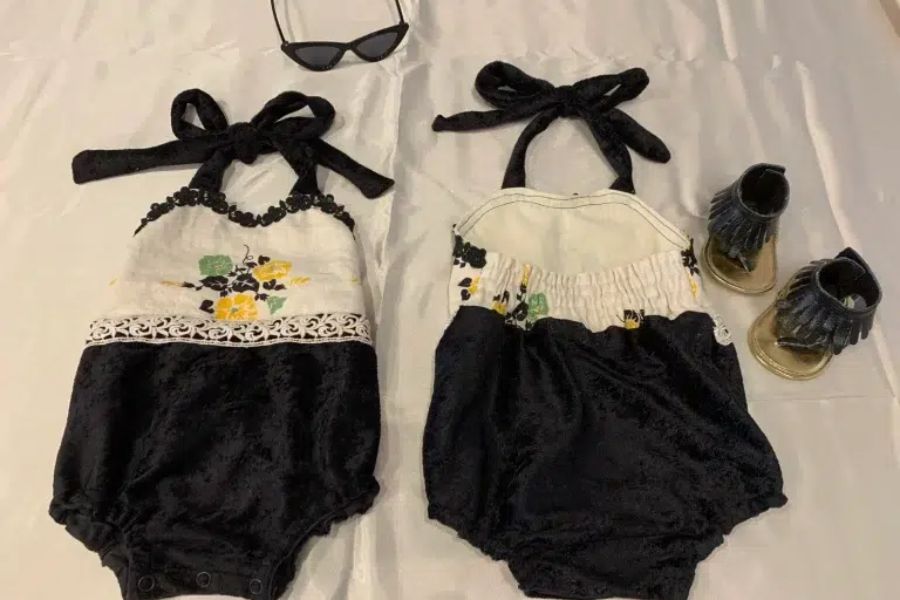
History of baby rompers
In the early 1900s, rompers became popular in the USA. They were loved for kids’ playtime because they were easy to switch between one-piece and two-piece outfits, allowing for lots of movement. Rompers were like the first modern casual clothes for kids, being comfy and loose, a big change from the tight clothes of the Victorian era in the 1800s.
Since the late 2010s, romper dresses and shorts rompers have made a comeback in fashion for people of all ages, from kids to teens, college students, and beyond.
Why are rompers great for babies?
Here’s why your child’s wardrobe should have several rompers:
- Rompers are incredibly cozy and comfortable for babies.
- Their one-piece design prevents active babies from wriggling out of their clothes.
- Fasteners make rompers easy to put on and take off, especially during diaper changes.
- Crafted from 100% fine cotton, ensuring softness and comfort for delicate baby skin.
- Machine washable at 30 degrees for easy care, perfect for busy parents.
- Providing comfort, convenience, and quality.
So how to make baby rompers?
We will divide it into 2 separate parts: How to sew a baby romper and how to hand smock a baby dress.
Materials
To make the romper, there are something that you should prepare in advance:
- 1/2 yard of fabric
- 3 snaps – you can use hammer on, KAM snaps, sew on, or snap tape for this
- 2 tiny scraps of fusible interfacing – about 3 inches by 1/2″
How to sew a baby romper from scratch
Step 1: Marking Buttonholes
- After printing and taping the pattern, cut out your pieces according to the directions on the pattern.
- Mark buttonholes on the right side of the front bodice piece.
Step 2: Sewing the Front and Back Together
- Sew the front to the front lining along the armhole and neckline, right sides together, using a 1/2″ (12mm) seam. Repeat with the back and back lining.
- Clip the corners and curves.
- Turn the front and back pieces right sides out and press.
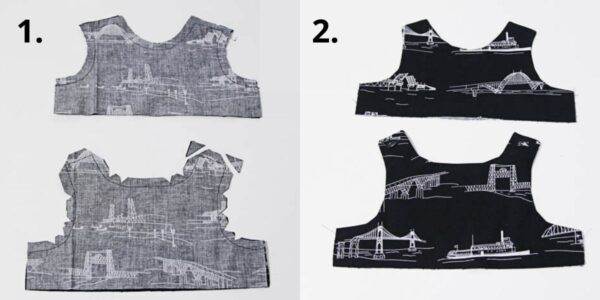
Step 3: Sewing the buttons
- Sew the buttonholes on the front piece.
- Place the front on top of the back, lining sides together. Open the side seams and pin the front to the back and the front lining to the back lining at the side seams, matching the armhole seam. Sew each side in one seam.
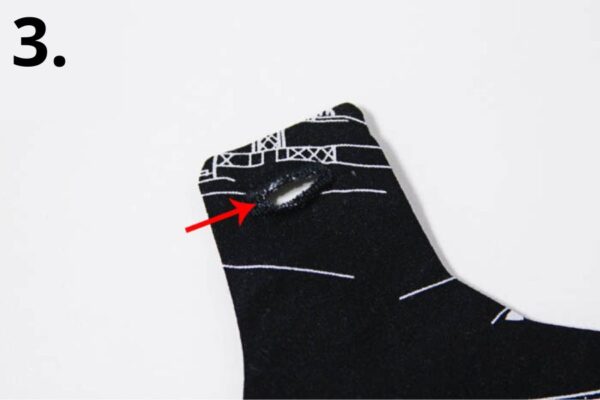
Step 4: Finishing the Seams
- When you fold the front and back down, the seams are enclosed inside.
- Sew the shorts fronts along the curved crotch seam, right sides together. Repeat with the shorts backs. Finish this seam with your preferred seam finishing method.
- Open up your shorts front and back and place them right sides together. Line up side edges and sew, then finish with your preferred method.
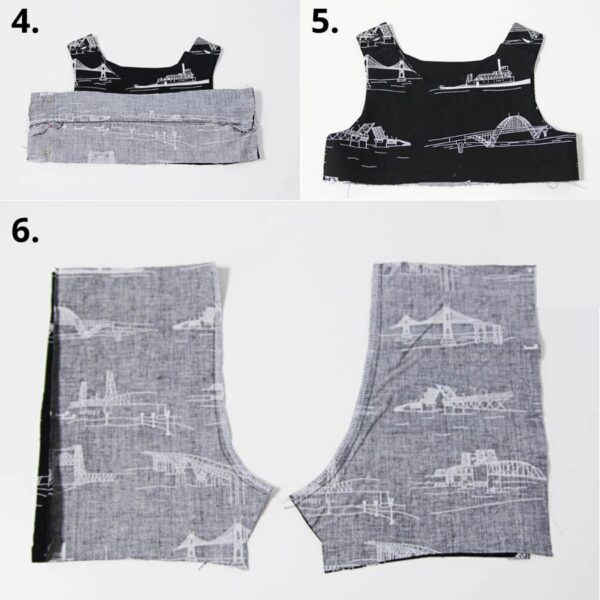
Step 5: Sewing the Hem
- Lay your shorts flat so that the side seam is facing up. Press the bottom edge up 1/4″ (6mm) twice, then stitch in place to hem. Repeat on the other leg.
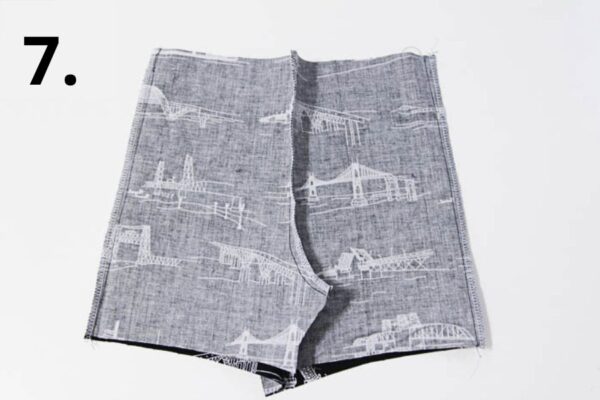
Step 6: Adding Interfacing to Legs And Apply Interfacing
- Lay shorts so the crotch seam is facing up. Iron a piece of 1/2″ (12mm) wide interfacing onto the shorts 1/8″ (3mm) away from the raw edge of the inseam. Trim interfacing to fit the width of the inseam.
- Iron the 1/8″ (3mm) or raw fabric toward the interfacing.
- Fold the inseam again 1/2″ (12mm) to cover the interfacing. You will have to stretch fabric on the bias to achieve this. Make sure the center seam on the folded edge aligns with the center seam of the shorts, then stretch the folded fabric toward the hemmed edges. Stitch folded edges in place. Repeat with another inseam, making sure the two inseams are the same length.
- Turn the shorts right side out. Pin the outside of the top only (not the lining) to the shorts at the waistline, right sides together. Match top front to the shorts front, the top back to the shorts back, and make sure to match the side seams. Stitch around waistline.

Step 7: Pinning the side seams
- Turn the romper wrong side out. Press the seam from the previous step up toward the top. Then fold the bottom edge of the lining under 3/8″ (9mm) and pin over the seam. On the right side of the romper, stitch in the ditch of the waistline seam to secure the lining in place. Alternatively, you could hand stitch the lining to the seam allowance.
- Set 3 snaps on the inseam. One should be just to the side of the center seam, the other two close to the edges.
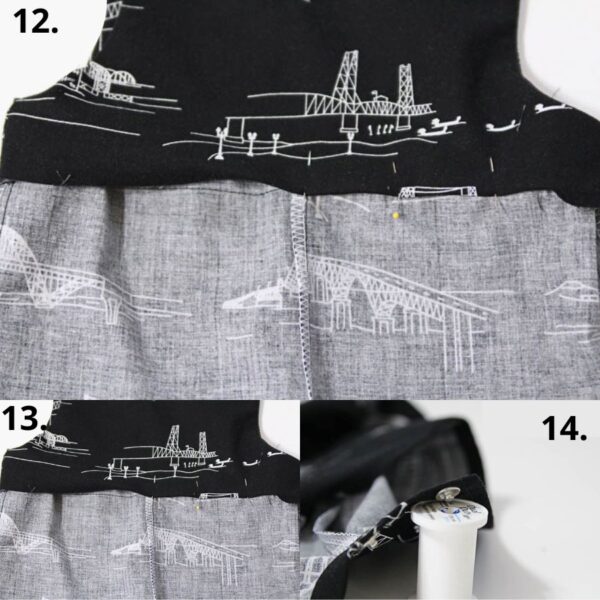
Tip: use an old thread spool to keep the snap intact while you hammer it on.
Step 8: Finishing the Romper
- Sew the buttons on the shoulders, and there’s your finished romper for a new baby!
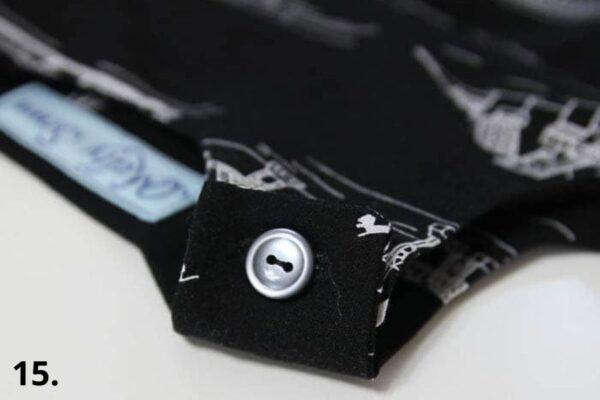
That was the last step and you just answered the question “How to make baby rompers”. And now you have something special and meaningful to give your kids at their birthday parties. I’m sure they will be so happy and appreciate your efforts.
Where to Buy Adorable Smocked Baby Rompers?
If you find it too hard for you, that’s okay. We have another option for you. Go to the K-Embroidery’s collections and find which ones you like the best.
Our products are 100% hand-embroidered, designed and created by the skillful hands of artisans in Vietnam. There are also reviews and feedback from customers who have purchased from us and you can refer to them and make your choice.
Conclusion
In wrapping up our guide on how to make baby rompers, we hope you’ve found inspiration and confidence to dive into this delightful DIY project. By creating these adorable one-piece outfits, you’re not just adding to your baby’s wardrobe, but infusing it with love and creativity.
So, grab your materials, let your imagination run wild, and enjoy the process. Each stitch is a moment to cherish, and every finished romper is a testament to your care and craftsmanship. Happy crafting, and here’s to many cozy moments ahead with your little one!
Contact K-Embroidery https://wa.me/+84855555961 to stay for wholesale pricing and receive the newest collection.


